#the modern edwardian
Explore tagged Tumblr posts
Text

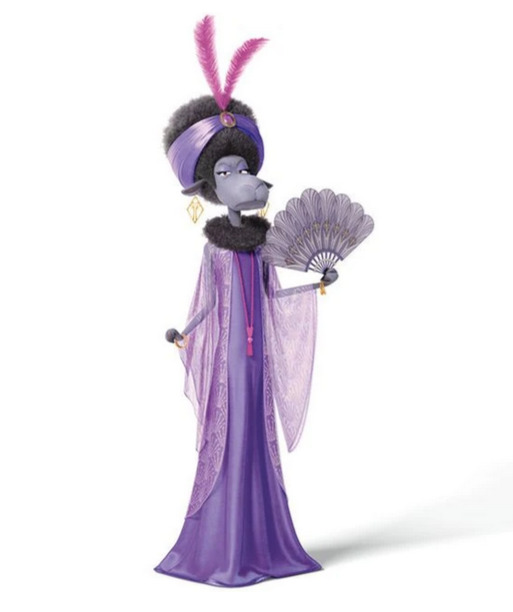

what do you call this style or character archetype?
#retired golden age diva#its interesting to me bc this flavour of old person irl at least for the first two is ceasing to exist#like the cartoon shorthand for granny in chuck jones era was dressed edwardian but nowadays grannies were wearing poodle skirts and 'modern#fashion
141 notes
·
View notes
Photo
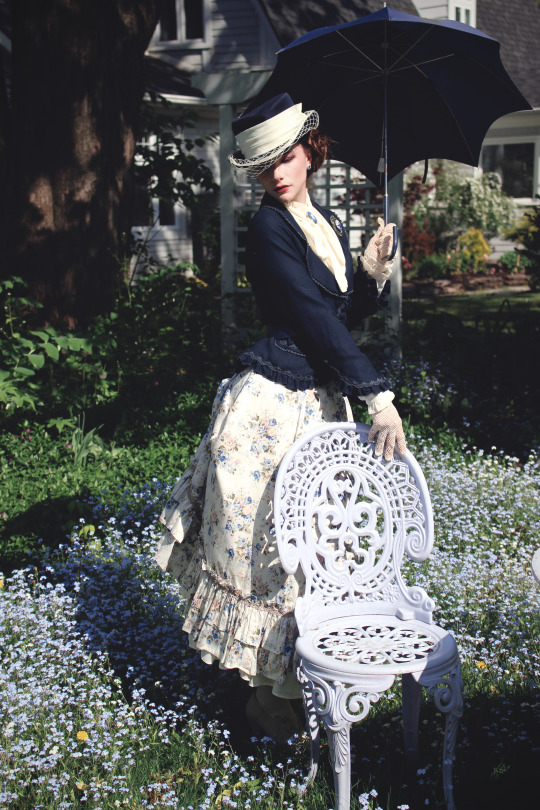
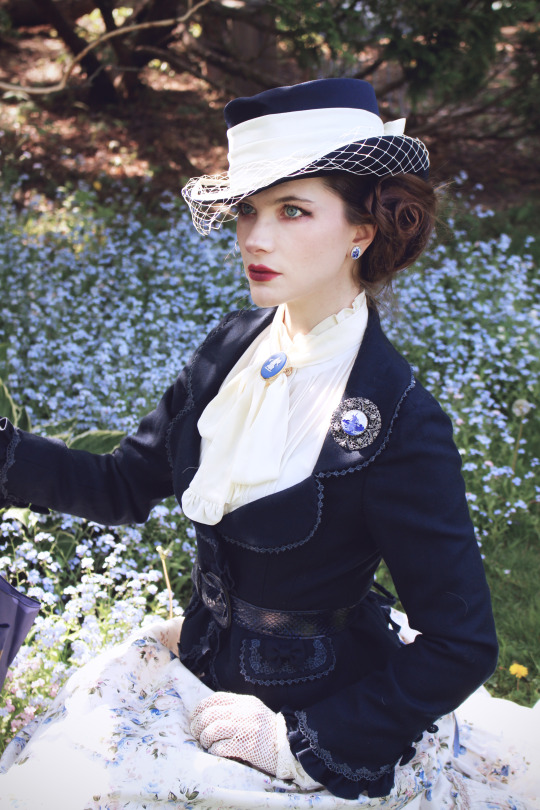
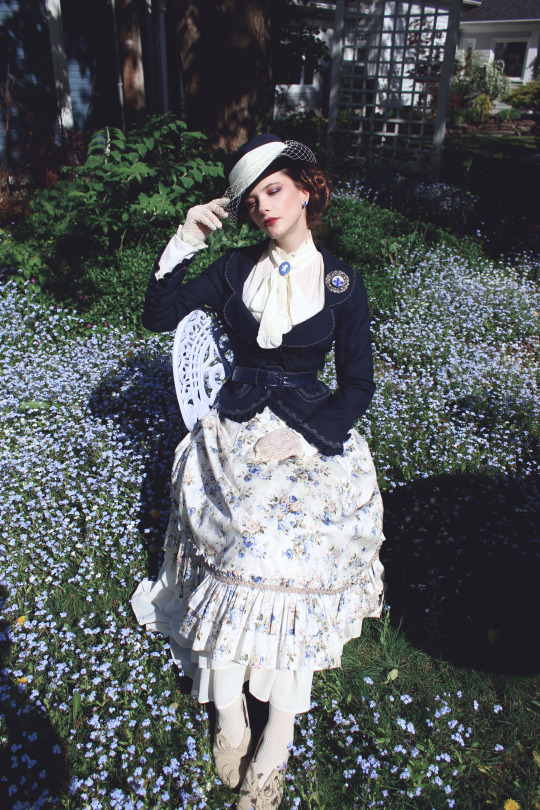
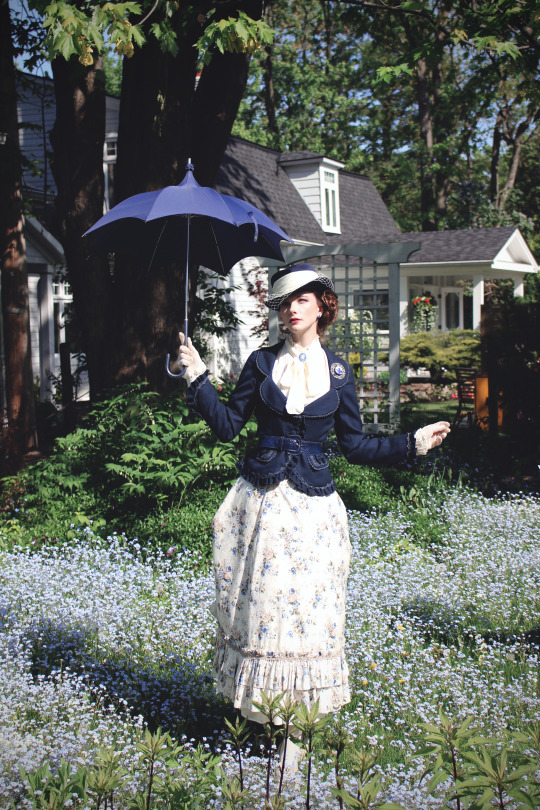
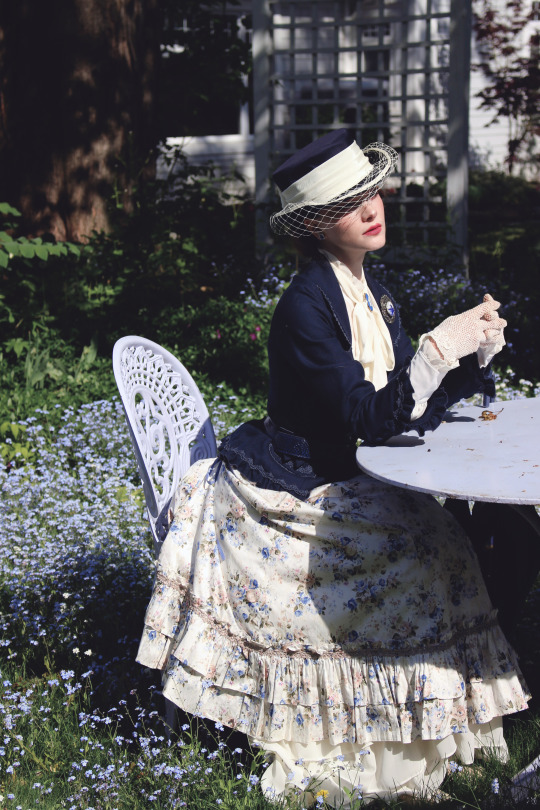
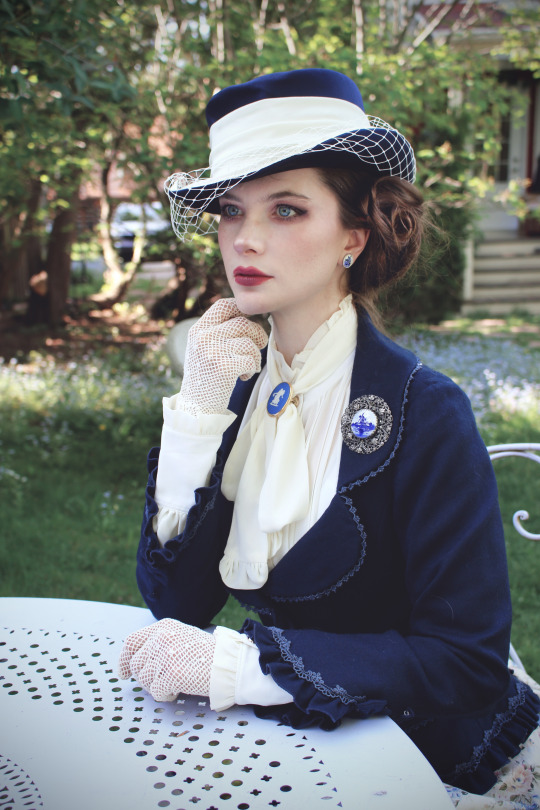

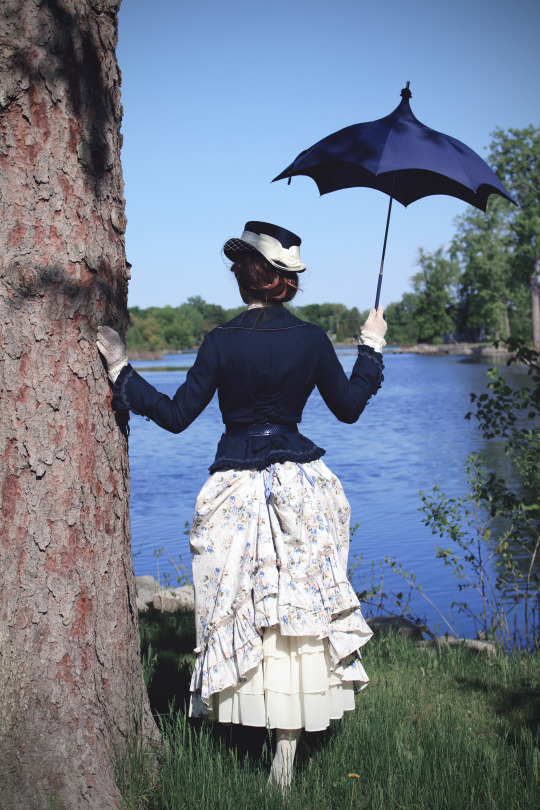
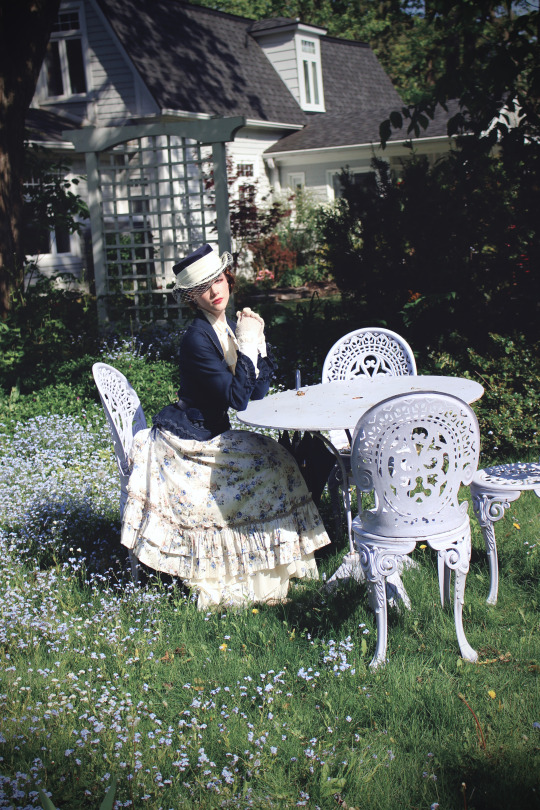

Blue afternoon
Outfit rundown Jacket: second-hand Mary Magdalene Skirt: second-hand Victorian Maiden Blouse and underskirt: old The Floral Notebook (dead indie brand) Hat: vintage Parasol: Alice and the Pirates Gloves: second-hand Victorian Maiden Shoes: old Hotter Shoes Belt: thrifted Brooches and earrings: vintage
#fashion#egl#ega#classiclolita#vintage#vintage style#vintage fashion#vintage hair#mary magdalene#victorian maiden#historybounding#modern edwardian#gibson girl#blue flowers#florals#bustle skirt#alternative fashion#jfashion#long hairstyles#rococo bouquet#fanny rosie#fannyrosie
1K notes
·
View notes
Text


A women's demonstration in Barcelona (Catalonia's capital city) on the 10th of July, year 1910. Between 10,000 and 20,000 women marched to demand freedom of conscience and speech, the separation of Church and state, and against clericalism (the intromission of the church in law and government matters).
According to the newspapers of the time, it was a massive and cheerful march, and many of the assistants wore a brooch with a caricature of the Republic kicking a priest. The demonstration, with its red banner in front, marched through Barcelona's city centre ending in the Civil Government hall. There, they gave the governor a manifesto signed by 22,000 people.
Other smaller cities and towns in Catalonia also held their own women's demonstrations for this topic around those days, including Mataró (with 8,000 women), Reus (8,000), Manresa (5,000) and Palamós (3,000).
The demonstration was organized by the Feminine Progressive Society, the Association of Red Ladies, and the Association of Radical Ladies. It was called to show opposition to a growing movement of Catholic women in Madrid (Spain's capital city) who organized to stop the liberal measures that tried to diminish the Catholic Church's intromission in the Spanish Government. At the time, women were considered to have a duty to take care of the home and their families, and transmitting Catholic values and behaviours was a part of that. But women have minds of their own, and many did not agree. Still, the idea that women don't think by themselves and only obey everything that the priests tell them was used as an argument by Spanish leftists against allowing women to vote, arguing that giving women the vote would mean the right-wing would always win because they get a 50% increase of population voting what the priests tell them to vote. Demonstrations like this one show otherwise.
Women were allowed to vote in Spanish elections for the first time in 1933. That year, the right-wing won, and women were obviously blamed for it. But the biggest reason was that leftists were very divided that year and that the CNT (the majority union, extremely influential with the working class) had told its followers not to vote. Thus, right-wingers went to vote while many leftists didn't, and the ones who did were divided. Had it been women's fault, we would have seen the right-wing win again in the next elections (1936), but that was not the case: the 1936 elections were won by the left-wing.
The 1910 demonstration against clericalism and freedom of conscience is the first known women's march in the history of Iberia.
Sources: Fototeca Institut Amatller and Dones de foc i d'aigua. Històries femenines obreres.
#història#barcelona#catalunya#history#women's history#catalonia#european history#1900s#1910s#20th century#20th century history#contemporary history#late modern history#belle époque#edwardian#edwardian era#feminism#women's suffrage#women in history#photojournalism
41 notes
·
View notes
Text

𝕽𝖊𝖛𝖊𝖗𝖎𝖊
#renaissance#medieval#victorian#victorian gothic#accessories#fashion#medieval aesthetic#necklace#earrings#medieval art#edwardian#baroque#regency#victorian era#art deco#art nouveau#artists on tumblr#jewelry#statement jewelry#handmade jewelry#modern renaissance#unique fashion#vintage accessories#vintage#historical#historical fashion#mother of pearl#royalcore aesthetic#royalcore#antique
51 notes
·
View notes
Text
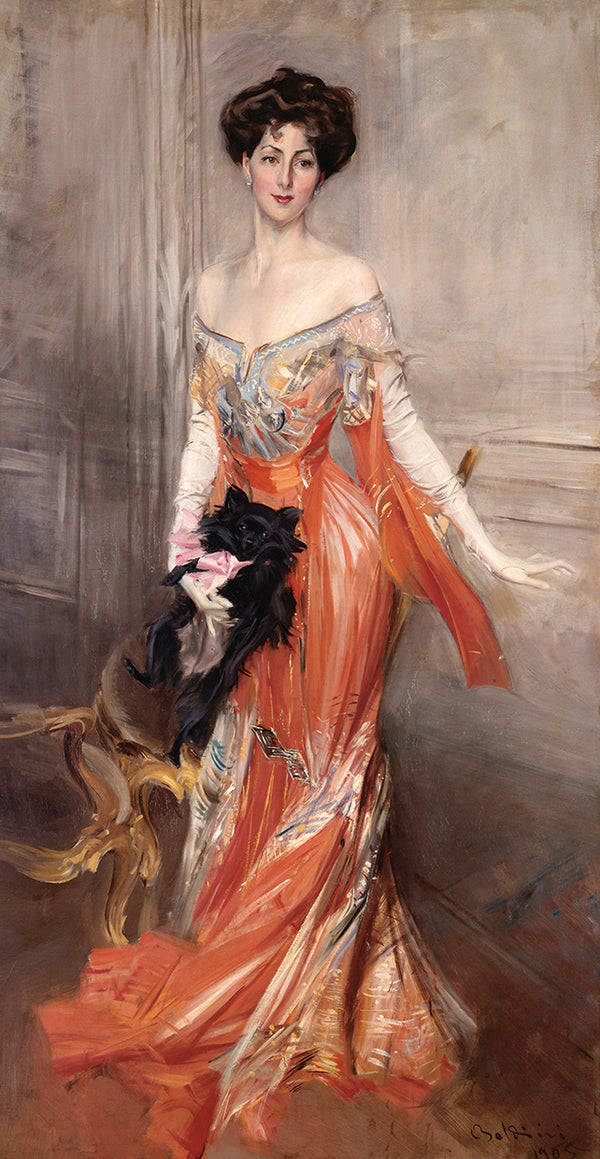
Portrait of Elisabeth Drexel (1905) by Giovanni Boldini
#Portrait of Elisabeth Drexel#1905#1900s#Giovanni Boldini#modern art#genre painting#Belle Époque#impressionism#art#painting#Miss Cromwell#Edwardian#Edwardian painting
407 notes
·
View notes
Text
how tf do you ruin Peter Pan???
#this broadway show modernized it??#they’re in the SUBURBS??#where is Edwardian England???#Big Ben???#tinkerbell!??
13 notes
·
View notes
Note
hello edwin
top 3 favorite fiction books go


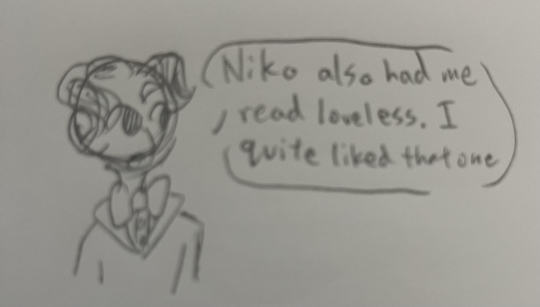
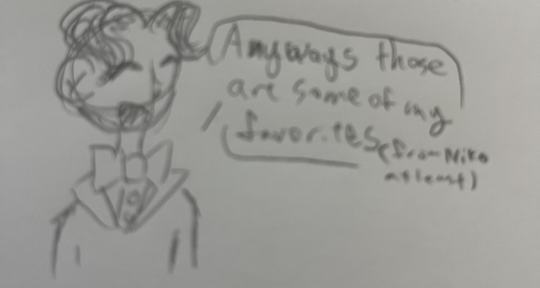

#idk why my camera made it blurry *sob*#I also know nothing about Edwardian era books lol#so I gave him modern books that I think he would like#dead boy detectives#save dead boy detectives#ask the dead boy detectives
21 notes
·
View notes
Text
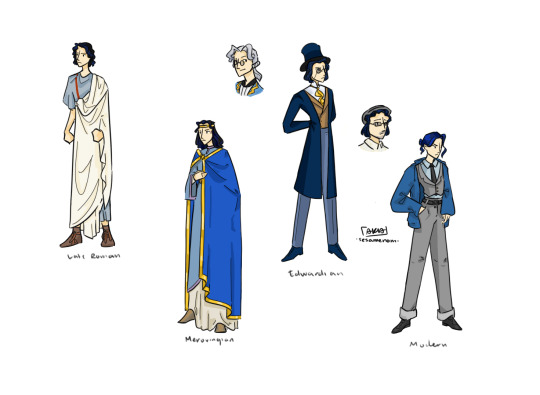
some ideas from an au where maglor just keeps living in britain (/himring?)
especially in the earlier eras he had to put a lot more effort into styling/dyeing his hair to cover his ears & the blueness/Elf Sparkle. he also wore glasses for a while to dim the Treelight Eyes (because even as badly faded as he is, it's still really obvious with how old he is).
#silm#silmarillion#maglor#seventh age stuff#<- adjacent au#weirdly modern maglor feels the closest to maglor-maglor?#but he also looks like a lawyer in a tv show for some reason?#like edwardian maglor's outfit is pretty similar structure wise (high collar/waistcoat/long coat) but the hat & hairstyle really affect it?#but modern maglor has roughly the same silhouette with the jacket and definitely the most freedom with the ear and hairstyle#early 1900s maglor has a sort of beard thing to not look too young but it looks weird on him i think#it probably wouldnt look as out of place if his hair was shorter but he needs to cover his ears somehow#honestly merovingian maglor looks pretty maglor-y the hairstyle is just not blue enough#the front curly bits on baroque maglor are very maglor-y despite being even less blue#...huh i guess maglor is just 80% Hair#the rest is just fancy clothes; sad harp; and depression#baroque maglor did turn out really well though#maybe because maglor-maglor already borrows a lot from the baroque composer style outfit wise? like he is for unknown reasons#the only YT-FoA elf with a waistcoat i think#through all of this he has remained mysteriously wealthy#(probably because he knows where all the treasuries are in himring)
118 notes
·
View notes
Text
Whitewash is extremely moral. Suppose there were a decree requiring all rooms in Paris to be given a coat of whitewash. I maintain that that would be a police task of real stature and a manifestation of high morality, the sign of a great people. -- Le Corbusier
A shocking call for compulsory whitening is made at the end of a key modernist manifesto. The pronouncement is associated with the signature whiteness of modern architecture -- an aesthetic regime that was presented as a complete revolution of the built environment in the 1920s and became the unconscious default setting of everyday life. Just look at the predominantly white background of most of the kitchens, offices, living rooms, bedrooms and bathrooms around the world [...]. Le Corbusier didn’t simply call for whitewash to be imposed by the police in the name of health. It was meant to act as a form of policing in its own right, a technology of surveillance that would put in motion an ever-expanding culture of self-policing. Whitewash exposes every dimension of life in front of it to judgement. It acts like “a court of assize in permanent session” that will “give a power of judgement to the individual,” and thereby “make each one of us a prudent judge.” [...] A “Law of Ripolin” -- the brand name of the hard impermeable and washable enamel “sanitary paint” invented at the end of the nineteenth century [...] is needed to ensure that all interiors are painted white to target any form of dirt or darkness:
Imagine the results of the Law of Ripolin. Every citizen is required to replace his hangings, his damasks, his wall-papers, his stencils, with a plain coat of white ripolin. His home is made clean. There are no more dirty, dark corners. Everything is shown as it is. Then comes inner cleanness [...]. When you are surrounded with shadows and dark corners you are at home only as far as the hazy edges of the darkness your eyes cannot penetrate. You are not master in your own house. Once you have put ripolin on your walls you will be master of yourself. [...]
---
Whiteness manufactures health, morality, and intelligence. [...] The office of a modern factory that is “clear and rectilinear and painted with white ripolin” is a place of “healthy activity” and “industrious optimism.” [...] Le Corbusier’s routinely authoritarian and often explicitly eugenic and fascist impulses, associations, and actions make him an easy target. But there are endless, quieter, ultimately more controlling and insidious celebrations of whiteness in other hands. Le Corbusier is but a tip of the vast iceberg of whiteness. [...]
The very idea of an interior is the effect of this everyday violence. Architecture is never simply complicit with authority. Authority without architecture might not even be thinkable. [...]
There is no apolitical concept of health; no natural body or brain waiting to be cared for or abandoned by medicine and architecture that is not already an effect of those biopolitical regimes.
It is through the question of sickness that architecture reshapes the human. The idea of a healthy architecture is always about the health of a small group relative to multiple others [...]. Whiteness is coded as a fragility requiring protection through continual acts of preemptive violence. Whiteness is not a thing but a defense and deployment of power over others. [...]
---
Whiteness in Le Corbusier’s The Decorative Art of Today, for example, is simultaneously the most modern thing to do, the very symptom of modernity, and the most ancient of gestures. [...] Le Corbusier’s argument was first published in a late 1923 issue of L’Esprit Nouveau [...]. It was, after all, the extended “Voyage d’Orient” of 1911 (including the Balkans and Greece, but especially Turkey) where Charles-Édouard Jeanneret, the young architect from a small mountain town in Switzerland who would a decade later rename himself “Le Corbusier,” became “besotted with white” and convinced that the future of architecture was white. Whiteness is discovered in the lands of the non-white; of those seen to be closer to deeper human history and therefore to be admired and learned from. In fact, the very point of going to the East was to encounter its “great white walls” as an antidote to the self-absorbed decadence of architecture in the North, as Jeanneret explained [...]. Jeanneret expresses nostalgia for the more intact and mesmerizing whiteness of the great mosques and vernacular houses of Constantinople (Istanbul) [...] [and] “Algiers-the-white.” [...] This pervasive sense of contamination provoked the call for a second, more explicit law to impose whiteness not only onto industrial culture, but also onto its victims: the people of color and places seen as newly “unhealthy” -- requiring, as it were, a dose of “their” own medicine. [...]
---
The “white” architecture of the 1920s drew on countless experiments in whitening buildings in the name of health. This included, precisely, the use of Ripolin that had already become standard in clinics, hospital wards, and sanatoria rooms at the turn of the century.
In 1899, for example, the Touring-Club de France, inspired by one of its [...] cyclist members who was a doctor, started a campaign for an easily disinfected “hygienic room” in hotels that would be Ripolin-lined [...]. Hotel rooms were treated as hotspots for contagion [...]. Given the largely upper-middle-class membership of the club, this anxiety about disease was also class anxiety, fear of the unclean other. The tourist was to be mobile yet isolated by a prophylactic whiteness that would itself travel in advance.
The Touring-Club exhibited such a prototype “white room” with toilette and toilet spaces designed by Gustave Rives at the 1900 Exposition Universelle in Paris -- strategically placed just inside the entrance of the Palais de l’hygiène [...]. The Touring-Club installed a series of such model chambres hygiéniques in automobile shows, congresses on tuberculosis, and international fairs. It was successful in persuading thousands of hotels to install such spaces [...].
Ripolin was used “everywhere,” for example, on the walls of the “hygienic housing” project for workers in Paris by Henri Sauvage and Charles Sarazin in 1903–1904. [...] The project was originally intended to feature a radical all-glass street façade with every window surrounded by webs of floor-to-ceiling hexagonal glass blocks [...] which would have been the most polemical housing structure possible, the most therapeutic role of glass, more extreme even than any sanatorium. The design was produced in immediate response to the new public health law of 1902 and the associated new building regulations. [...]
---
It is always about control of the threatening other of epidemic disease and control of the laboring poor, itself coded as dark, migrant, and contagious, a disease in its own right. And throughout this discourse of control, there is a seemingly “modern” disdain for disease-incubating ornament in favor of smooth white surfaces. [...] What is remarkable in the end is this trans-historical resilience of whiteness [...]. It orchestrates life and death.
---
All text above by: Mark Wigley. “Chronic Whiteness.” e-flux (Sick Architecture series). November 2020. [Bold emphasis and some paragraph breaks/contractions added by me.]
#ecology#abolition#health#imperial#colonial#landscape#modernity#temporal#indigenous#multispecies#tidalectics#archipelagic thinking#pathologization#haunted#halloween i guess idk#victorian and edwardian popular culture#racialized architecture#moral whitewash
239 notes
·
View notes
Text




(240424) 'Earth, Wind & Fire'
#riwoo#boynextdoor#bonedo#bnd#forbnd#useroro#userfoive#eritual#usermask#ultkpopnetwork#dailybg#kpopccc#kpopedit#kpopco#flashing tw#him in that lowkey edwardian shirt??? goodbye#the collar is modern but the SLEEVES???#thank you stylist i owe you
24 notes
·
View notes
Note
Oh my I really want Edwin to casually use the word "ejaculate" to mean "shout suddenly" in front of the gang and have to deal with everybody suddenly becoming 11 years old
hdhzgsdjchshd NOOOO he so fucking would what a nightmare……..
the sheer satisfaction crystal would have the moment he figures it out and gets super ultra flustered and she gets the shining opportunity to say, with all the smugness in the world: “well, that was rather embarrassing for you.”
#I wonder if this ever happens the other way around#like some modern use of a word is casual and whatever but the same word in edwardian english is like. profane#im sure there are some#rambling#edwin#these are the kind of asks i like to get. so honored
12 notes
·
View notes
Text










#renaissance#medieval#victorian#victorian gothic#accessories#fashion#medieval aesthetic#necklace#earrings#medieval art#alt fashion#gothic#edwardian#royalcore#art nouveau#booklr#artists on tumblr#bridalfashion#alternative#victorian inspired#victorian goth#modern renaissance#greek mythology#norse mythology#mythology and folklore#folklore#krakenblr#age of mythology#historical#historical fashion
11 notes
·
View notes
Text
Evolution of Style.
#fashion#style#ancient civilizations#modern times#Prehistoric Age#Ancient Egypt#Ancient Greece#Ancient China#Medieval Europe#Renaissance#Baroque#Rococo#Victorian Era#Edwardian Era#16th century#17th century#18th century#19th century#20th century#1500s#1600s#1700s#1800s#1900s#2000s#2077#evolution#Ancient Rome
42 notes
·
View notes
Text
my favourite historical era to daydream about is that span of a few decades between 1890 and 1914ish. late victorian, fin de siècle, edwardian. there’s just something so exciting about it. the world on the brink of radical change, of catastrophe and decimation but they don’t know that for now, the twentieth century hasn’t been inaugurated as the bloodiest quite yet, all that looms ahead is a boundless bouquet of potential, invention, adventure. a turning point in time. spiritualism and the hereafter are in the air all clashing and collaborating and cooperating with rationality and progress and scientific advancement, technology and faith, mysticism and machines, the arts marching on into modernism and abstraction but not quite yet; there’s a future on your doorstep, the air is full of love and precognition and imagination. get out there in your hot air balloon and watch the world turn on its axis, holding its breath
also the fashion’s pretty cool
#basically. basically charley pollard gets it right. if i was from the 1930s i’d have misplaced nostalgia for the preceding decade(s) too#and call myself an#edwardian#fin de siècle#1890s#1900s#1910s#belle epoque#victorian#history#fashion#art history#modernism#writing#jamie.txt#jamiecore
19 notes
·
View notes
Note
ooooh so I would love to hear more about Helen Norwich, and about how the English Civil War might have gone in that 'verse!
Helen, I don’t know if I said but she’s Norwich’s niece. Which I want to be clear, he never did anything to her but OH BOY. She was also born not that long after Tom Cromwell escaped him (Helen was born in 1523) after he’d been expecting to be his older brothers heir for so long (his brother had been married twice before Helen’s mother with no children and they had Helen late in their marriage).
Helen is very quiet, very considered and sensible - but she is beautiful which Norwich, after his Annoyed At Her Existence was like ‘…oh yay BARGAINING CHIP’ - it meant he could hold her wardship and then find an appropriate husband for her that could best benefit him.
(Helen was preparing to make the best of this she could - at least Norwich didn’t actually give a fuck about the actual management of the Earldom and she’s fairly sure that any husband he would pick for her wouldn’t either and would be happy for her to stay in the country with their children while he was at court so…she’d have that at least, in between whatever cruelty)*
*I’m fairly sure Norwich wouldn’t suffer like extreme cruelty because Status Thing and Status Thing Only but also he would totally not care if Helen was miserable or not.
She gets the Earldom in her own right in the end and makes it a really lovely place again - I think Welles Hall is actually particularly famous for fine wool(s) but I’m still working that out.
The Civil War in OT3 verse is me going ‘what if I flip things and the Restorationists are pissed about the increasing democracy + their colonial attempts got slapped down HARD’ essentially.
Essentially there’s this but I’ll babble some more!
Baron Hugh Wake (Of Liddell) is based on a real historical family - the first Baron had a daughter married one of the sons of Edward I by his second wife. It is however by his son (in our history both of the first barons sons died but here his oldest lives) John that Baron Hugh is descended.
King Hugh/The Restorationist King essentially begins the rebellion, well I’ll go from my notes:
Started it after his father, son and some of his sons friends were going to be jailed for human rights abuses. Believed that England should be an Empire to be great, should expel all the Jewish people, should become a Christian nation and revert to the ‘natural order of nobility.
(They attempted to start a colony in what we would call North America. (The Spanish had previously been kicked out of South America in a story that is not mine to tell but does happen). They failed Miserably)).
There are whisperings about the changes Thomas and Mihrimah make and things do happen but they really start in Turhan’s reign. And then it goes on and becomes louder. About how Not White, Not Christian the royal family has become. About how there are Jews and Muslims and…in England. About how there is no imperialism, no ‘glory of empire’ and how people are being penalised for trying to make one by like jail.
So we get to Henry VIII’s great great (I think that’s enough greats!) grandson Arthur (Jahan) II (I call him Arthur II because of the Tudor Arthurian Fandom Thing). His first child is a daughter and he decrees that she’s going to be the heir regardless of any brothers born afterwards. The royal family takes the final steps to expand representative democracy. Also the eventual restoration king’s son, his sons friends and his father are jailed for a failed attempt to colonise North America. They rebel at all of the above (it is possible that I a biracial jewish etc woman am Having Some Feelings). Arthur is eventually beheaded, there’s a Restoration King for the same time Oliver Cromwell ruled and then..Arthur’s daughter Charlotte Askala is invited back.
The Restorationist Reign included a lot of awful things happening - like I mentioned the reform schools here
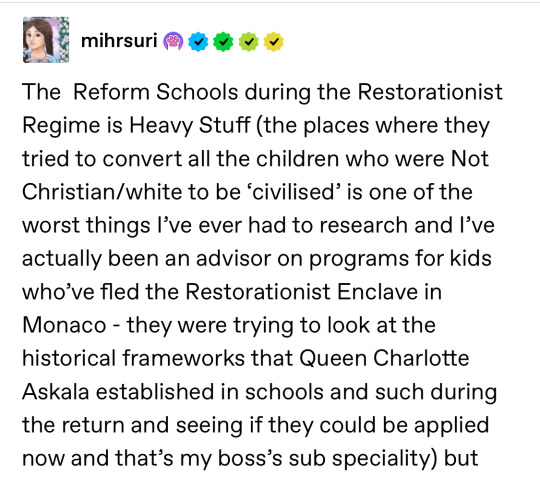
But that was very much the idea - they also did that to the children of nobles etc who weren’t restorationists. It’s pretty heavy history and I’ve been thinking about it a lot lately (including Gregory Cromwell’s descendant(s) and how the chest with the Triads letters etc survived). The King Arthur Jahan was beheaded, his wife and daughter sent into exile. (I love them as well). Then Charlotte Askala (his daughter) is asked back because the whole thing falls apart after Hugh’s death (he’d styled himself essentially as protector of the realm for the quote ‘true king’
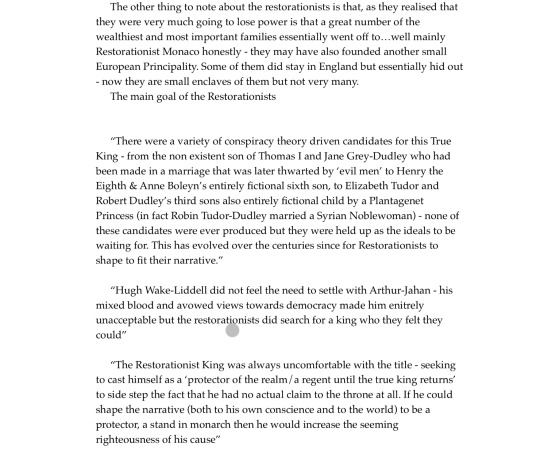
There’s a whole bunch of other things that will come up in the modern day with this universes version of the Abdication in the 1930s but I will stop now! (Also the other thing to know about Hugh is that he has two children he loves deeply - his son ended up in luxurious exile and never had children but his daughter had three daughters of her own but because Restorationists do not accept inheritance through the female line they are never going to be able to be held up as heirs which is a whole other Fuckery related to the abdication).
#lil and her ridiculous aus#ot3: political power trio#meme#tudors ot3 verse reference#i have so many notes tumblr so many#basically it’s a backlash to progress that ultimately does not win and in fact gets smacked down but it is still unfortunately a minority#(And it really is a minority like)#(There are people casually into it for the aesthetic - modern day restorationist rep is like Edwardian/1920s Old Money Vibes)#(Because when the restorationists realised they were out of power a lot of them fucked off to Monacco/various enclaves in Europe)#(With their money)#(people are very much working on getting people out of there and there are laws etc about education that are enforced)#(but the enclaves are A Problem)
12 notes
·
View notes
Text
youtuber: “kiera knightly has such a historical look to her”
me: uhm?? no????
#she is like so modern beauty standard core#NOTHING BAD ABOUT THAT AT ALL#but when i look at her im like yeah thats a beautiful woman from rn#like no no she does not fit georgian standards#OHH PROBABLY victorian? edwardian ?#one of my fave parts of pride and prejudice 1995 is the fact that they all ESPECIALLY JANE look straight out of fashion plates#jane is literally a greek statuess and that was the IDEAL#at the time#so its so cool#RANDOM TANGENT#im not at all mad abt this mostly im just confused about this statement i
3 notes
·
View notes